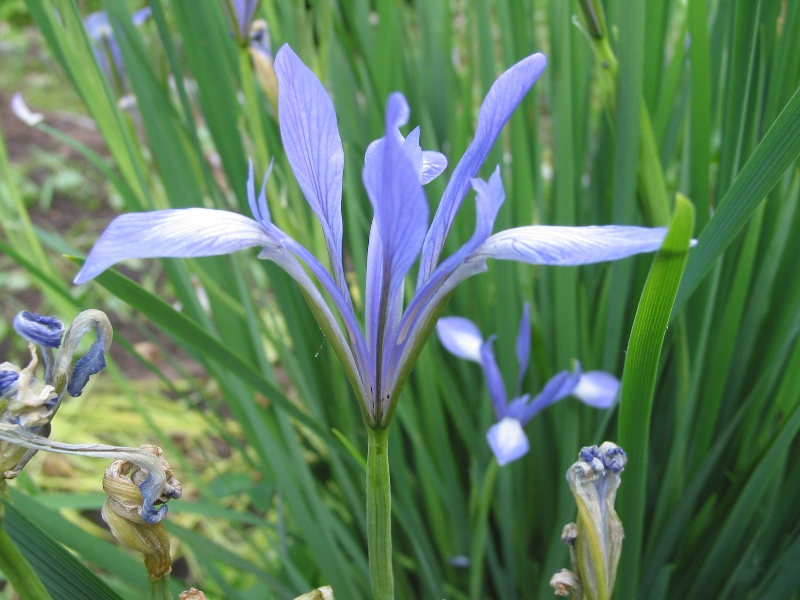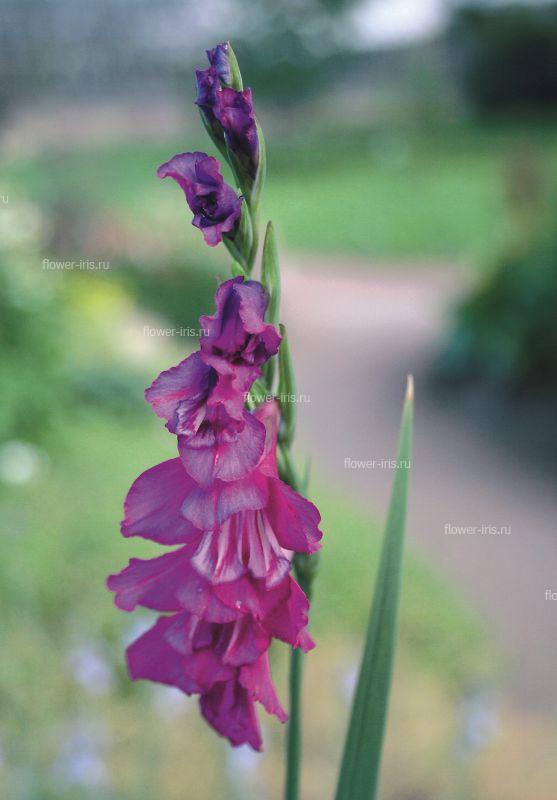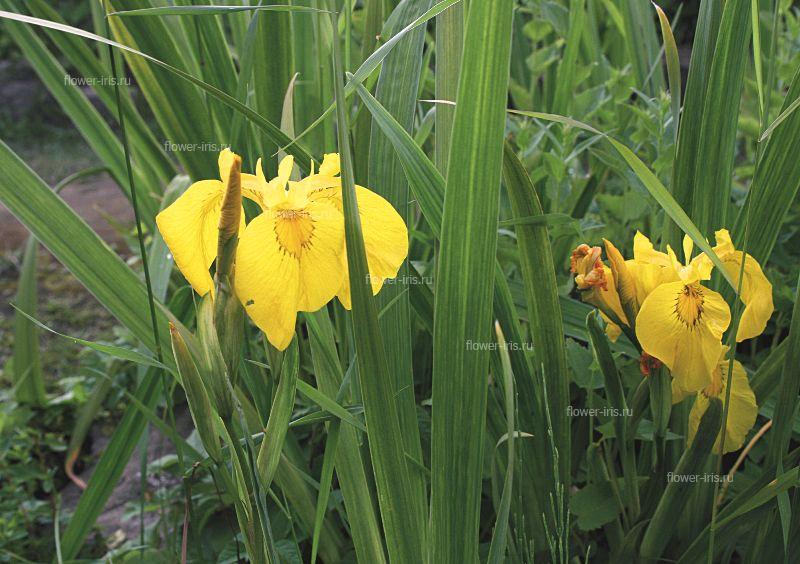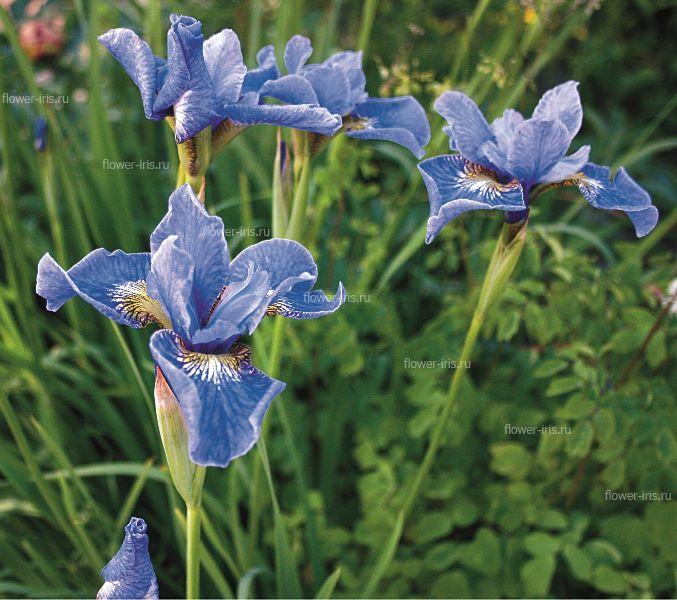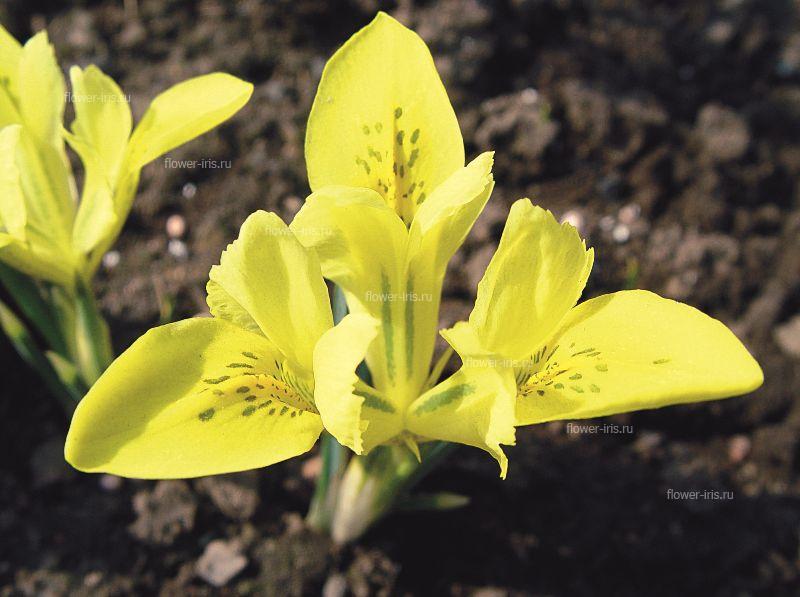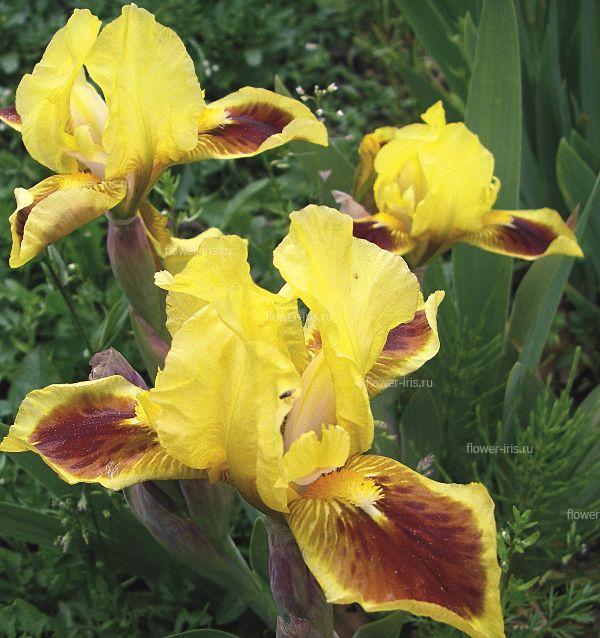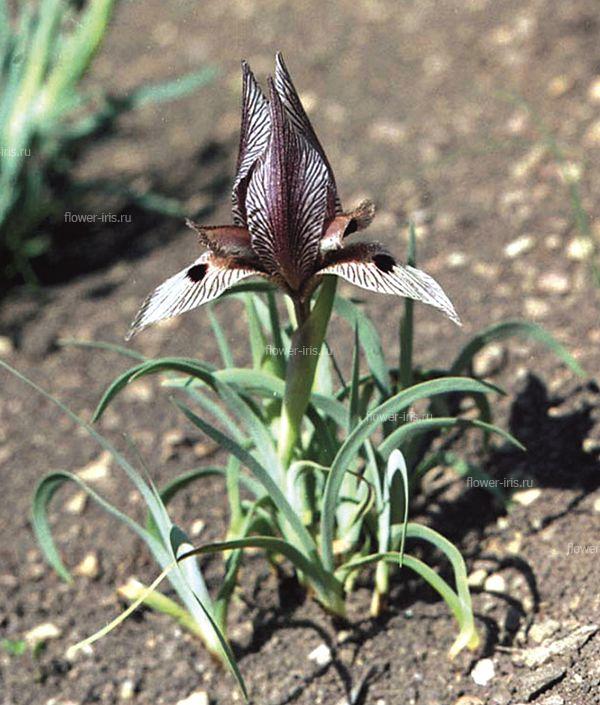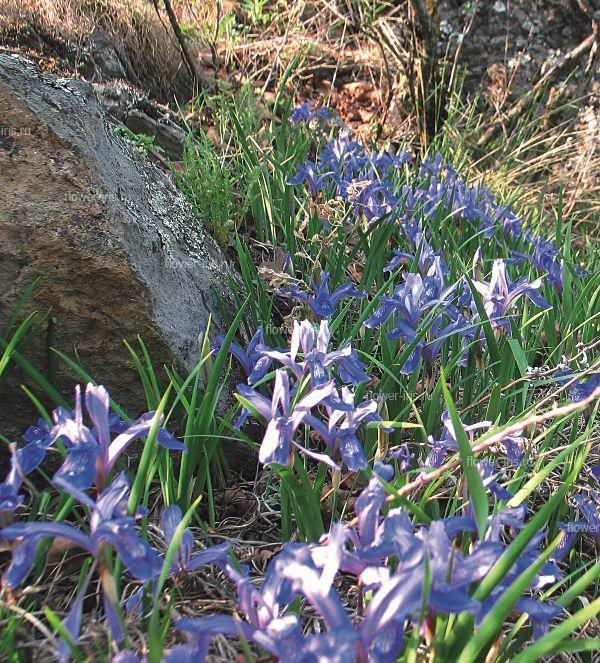|
News Photo Gallery |
Exposure Iris garden GARDEN IRISESHomepage → Books on Iridarium (Iris Garden) → Look in the book → Exposure Iris garden GARDEN IRISES
Introduction
Create iridariya Family Iridaceae Bulbotubers Bulbous Rhizomatous Genus Iris Subgenus Iris Subgenus Limniris Subgenus Eremiris Subgenus Xyridion Subgenus Tenuifolia Genus Pardanthopsis The exhibition "Iris Russia" Exposure Iris garden Cultivate Insect Pests and diseases of Irises Literature The translation is done through the service translate.google.com. This is a favorite exhibit visitors Botanical Garden Botanical Sciences. Main purpose of the exhibition Iridariya - show the natural variability of plants and targeted development. To achieve the first landing are wild iris, the second - landing their cultural forms. To understand the world of species diversity, there is a botanical classification. To register advances in varietal selection at international level was necessary to create a garden of classification. Foreign and domestic classification associated with membership of the parental species to one or the other subgenera or affinity with a particular kind of source or group of species used in the hybridization. Since the selection work with irises took increasing scope, apart Societies Iridology England, Russia, USA, Germany, Japan, active society involved in one of the groups of garden irises (eg, society involved in the Siberian irises - Siberia Iris Society; Spurrier irises - Spuria Iris Society, etc.). All these societies publish their special magazines and yearbooks on various issues of biology, breeding and culture of wild and cultivated irises. Appear and publications devoted to specific groups of garden irises, whose authors have extensive experience in their growing in their collections (Vasiliev, 2005; Sallet, Mertzweiller, 1988; McEwen, 1990, 1996). These societies uniting amateur gardeners and professionals in groups regulate the registration of varieties and species. The most frequently used in the foreign and domestic literature (Randolf, 1959; Kohlein, 1981; Warburton, 1995; Rodionenko et al, 1981; Rodionenko, 1995, 2002) classification covers a total of 17 different groups (Appendix). Intensive selection work carried out with representatives of all groups. The total number of cultivars of iris reaches more than 40 000. In domestic garden varietal classification iris or iris garden is divided into 10 groups. Iris as a site for breedingThe earliest images of irises made at least 3,500 years ago. Theophrastus, a student of Aristotle, the first attempt to classify plants and describe them. He briefly mentions two irises, bearded and beardless, calling them by different Greek names. Bearded iris interpreters identify with I. pallida L. Theophrastus (372-287 years. BC. E.) Reported that Iris grows best in Illyria (regions of Austria, Hungary, Italy), however, no doubt that at that time it was the population of hybrids that are now classified as Iris ? germanica. However, for Theophrastus and other Greeks iris was just iris, got its name because of the variety of color in the rainbow goddess Iris, which, according to ancient legend, a messenger of the gods came down to earth on a rainbow to bring people the news of the world. It has long been a man without knowing it, he began to pick randomly occurring in crops of cultivated plants polyploid forms. Iris as an ornamental crop plant known since XVII century. More than 350 years ago, John Gerard wrote about a wide variety of high and low irises, large and small, with and without odor, and of a wide variety of colors. Although irises are known in the culture for a long time, they began to develop a systematic breeding only in the beginning of XIX century. In 1822, the first hybrid irises was given a name, and it became commercially distributed as iris Buriensis - the name of the breeder De Boer, who formulated it. The most important crop of modern flower - Bearded Iris - poligibridnoe has complex origins. Selection began with the introduction of an independent culture I. germanica, I. variegata and I. pallida. Happened improving varieties of these species, including hybrids between them, among whom were already polyploids with 2n = 48. These hybrids subsequently crossed with Southwest views, and later with I. aphylla, etc. Further improvement Bearded Iris went solely by the selection of the polyploid species. Equally important crop - Japanese Irises - cnachala long time improved by selection of one species (I. ensata), which may have been submitted in the nature of the two types amfipoliploidnymi (with 2n = 36 and 54). American breeders first created a series of cultural irises on the basis of natural polyploid-hybrid complexes Virgin, California and Louisiana irises. They were then refined polyploidization Siberian irises. In crosses Siberia (2n = 28) and California irises (2n = 40) were obtained new types - Kalsiby. In Germany, successfully engaged hybridization Thomas Tamberg (Tamberg, 1980, 1992), which was able to connect because the Siberian (I. sibirica) and k bristle (I. setosa - polyploidy in nature). The new series is called Sibtoza. And virtuoso hybridizers did not stop there. He created hybrids - I. chrysographes? I. lactea, I. laevigata? I. versicolor. In Canada, the Far T. Hoober crossings since xiphoid (I. ensata) with Virgin has created a new series of hybrid types of "Biverzaty." In Japan Tsutomi Yeboah (Tsutomi, 1991) raises new line connection because amphidiploids smooth c k xiphoid, because blood-red c k smooth, etc. Now doing this successfully and with Spurrier iris, and with dwarf bearded irises. In the collection of the Botanical Garden in the Botanical Sciences Iridarii Bearded Iris varieties grown both old and modern domestic and foreign selection. Of beardless Iris is the richest collection of varieties of Siberian Iris. Large assortment group Irises water garden. Very interesting, but requires special attention Collection - Japanese Irises. Presented a small collection of irises domestic breeding (IV Dryagina and GI Rodionenko), here shown sorts of groups Spurrier Irises. Separate exhibition of Spoor Iris yet. There is no separate exhibition beardless Types arid regions of a collective group of little-known Iris. However, many species of these groups can be seen in the geographic modules, but are rare and extremely valuable Bearded Types arid areas (species of the subgenus Psammiris), and species of the Arilbredov - only partially represented in the exhibition. The exhibition presents the types and varieties of Bearded Iris, which are distributed into 6 groups, and 3 groups beardless irises. Presented a small collection of varieties of bulbous Iridaceae (see "Bulb Iridaceae"). Long experience of growing plants in one place shows that the density of the iris placement depends on the purpose of planting species and varieties. Very impressive look of one species of irises on the lawn or along the garden paths. Undersized species and varieties suitable for curb or pebble garden. Moisture-loving irises are the perfect decoration for any body of water. Plants for cutting, need better nutrition and protection, however, can rely on the case. It happens just lucky: viewing garden, cut flower stalks outstanding height. Bearded Iris (Bearded)Submitted 6 garden groups that differ in height stems, - Miniature Bearded Dwarves, Standard Bearded Dwarves, Intermedia, High Bearded thumbnails, or as they used to be called, Canteen Irises, border bearded and Standard High Bearded Irises. Some groups mentioned species growing in Russia and are of interest for the selection of works in a particular group. Previously, all bloom: Miniature and Standard Dwarf Dwarf Irises. A little later, his delight blooming irises group Intermedia, Miniature Average height, or the dining room, and fillets. Not limited to timing of flowering Standard High Irises. It is impossible to imagine without Iridary bearded irises. This group is attracting the attention of most visitors. For all the years of her collection has been tested more than 4,000 types of "beards." The main attention was paid to the following groups: High Bearded Irises - studied more than 3,000 varieties, Standard Bearded Dwarves - about 200, the same - from the group Intermedia Irises. A Miniature Bearded Dwarfs, High Bearded Miniatures and fillets Bearded tested in a small number, no more than 50-100 varieties of each group. The fact is that if the tall bearded irises for a long time been the centerpiece of flower growers, the miniature irises not immediately received widespread. Iridarii on more than 200 varieties of bearded irises. 1. Miniature Bearded Dwarves (Miniature Dwarf Beardeds - MDB [2]) - unbranched stems up to 21 cm high., Usually shorter than the leaves (or equal) to the flower spike 1.2, no more than 5-5,7 cm in diameter. Iridarii to bloom in late April and early May. This group would like to set up a rocky garden. Very effective landing large monochrome groups. Among the species of this group, native to Russia, are of interest, such as a dwarf because (I. pumila) - 2n = 32,40, because skinny (I. scariosa) - 2n = 24, k bluish (I. glaucescens) - 2n = 24, because Timofeev (I. timofejewii) - 2n = 24. Miniature of a bearded dwarf in the collection should be noted Papet Baby (Puppet Baby) - lavender-blue flower, a plum spot Tsirklette (Circlette), Epril Accent (April Exent), etc. On Iridarii were tested following classes: Lake Alpin (Alpine Lake ), Lemon Puff (Lemon Puff), Little Agate (Litle Agate), Little Sunbeam (Little Sunbeam), Nick-Nack (Knick-Knack), Pussy TOYS (Pussy Toes), Sapphire Gemme (Saphire Gem), ticket Boo (Tickety Boo), etc. 2. Standard Bearded Dwarves (Standard Dwarf Beardeds - SDB) - stems from 21 to 40 cm high. 2-3 flowers per spike. Flower 7-9 cm in diameter. The leaves are usually the height peduncle. Suitable for planting along the curb lanes and rocky garden. Species growing in Russia and the interest in this group of irises: K. leafless (I. aphylla) - 2n = 24,48, since fork (I. furcata) - 2n = 24. Standard varieties of bearded dwarf in the collection: Eye Shadow (Eye Shadow) - purple flower on the lower lobes dark purple-red spot, breaststroke (Brassie) - flower brown, velvety, Baron Baby (Baby Baron), Pappet (Puppet), Islands ( Wow), etc. For many years, the following varieties are grown Baton Boxing (Batton Box), Blue Dinim (Blue Denim), Pearl Bordeaux (Bordeaux Pearl), Golden Fair (Golden Fair), Gellon Gould (Galleon Gold), Doering-Le ( Derring-Do), Carrillo (Carilla), Lilipinkput (Lillipinkput), Nout Love (Love Note), Leyst Lemoneyd (Laced Lemonade), Cape Orange (Orange Cape), Pepita (Pepita), Baby Sky (Sky Baby), Ski ( Frisky), Jem Fuchsia (Fuchsia Gem), Futnout (Footnote), Chanted (Chanted), etc. 3. Intermedia (Intermediate Beardeds - IB) - stems from 41-70 cm in height. Flower 8-12 cm in diameter. Average height of irises is the earliest to bloom, end of May-June. Suitable for a group of tracks and mixborders soliternyh landing on the lawn. Can be grown for cutting. Varieties of irises on srednerosloe Iridarii Blue deg Blonde (Blue Eyed Blond) - flower monochrome canary yellow, with the original blue beard, CJ (Cee Jay) - plikata on white bright blue-violet rim, turning into ticking. The edges of the lobes folded, MI Zing (Zing Me) - a creamy lemon, with bright brown spots on the lower lobes of perianth, brown beard, Baria (Baria) and so many years in the collection of cultivated varieties of this group: Avenella (Avenella), Az Ap (Az Ap), Gay Hussar (Gay Hussar), Delilah (Dalila), Dili (Dilly Dilly), Dorothea (Dorothea), Catherine (Caterina), Kute (Cutie), Con Brio (Con Brio), La Bute (La Beaute), Fantastic Blue (Fantastic Blue), Princess Elfin (Elfin Princess), etc. 4. High Bearded Miniatures or, as they used to be called, Canteen Irises (Miniature Tall Bearded Irises - MTB) - stems from 65-70 cm high., Flower and 9 cm wide. Suitable for a group of tracks and mixborders soliternyh landing on the lawn. Can be grown for cutting. Class Table Iris collection: Petite Monet (Petite Monet) - flower creamy white, with a blue-violet stitching, Lily Virginia (Virginia Lyle) - blue, with an orange-yellow beard, French (Frenchi) and others were tested on Iridarii Class: Bumblebee Delight (Bumblebee Delight), Caroline Rose (Carolin Rose), Concord Cafe (Concord Caf?), Lady Moore (Lady Mohr), Medway Valley (Medway Valey), Meadow Luck (Medow Lark), etc. 5. Bearded fillets (The Border Beardeds - BB) - up to 64 cm in height., Flower 13 wide and 9 cm high. Suitable for a group of tracks and mixborders soliternyh landing on the lawn, bushes growing over groups. Can be grown for cutting. Bearded iris varieties Kerbstones collection: Batik (Batic) - flower blue-purple, with white strokes, Brown Lasso (Brown Lasso) - bicolor plikata: upper perianth lobes mustard-yellow, lower - purple, with brown border, etc. The Iridarii and other varieties grown in this group: Bater Gel (Batter Girl), Bonshak (Bohnshack), sour jelly (Marmalade Skies), Peaches toppings (Peaches Topping), Magick Fire (Fire Magic), Hopskoch (Hopscotch), Helen Koo (Ellen Q), etc. 6. Standard High Bearded, or tall bearded (Tall Beardeds - STB, TB), - this includes all bearded irises with peduncles of 71 cm and above. Great for producing large groups on the lawn, along the tracks, the house, consisting of one kind or of different varieties, but presented multiple instances. Varieties represented in the collection: Apollodorus (Apollodorus) - the transition from copper-brown and chestnut shades to darker on the lower lobes, with a dim golden border, Royal Blenheim (Blenheim Royal) - rich blue with corrugation, Diskreshen (Discretion), Wabash (Wabash) - bicolor Replacing: Upper perianth lobes pale blue, lower - dark-blue-violet, Fire Vita (Vita Fire), Splendor Cascade (Cascade Splendor). For many years, the Iridarii cultivated and show good results the following classes: Almaden (Almaden), Bablin Brook (Babling Brook), Black Tafeta (Black Taffeta), Monarch Blue (Blue Monarh), Hundred Broadway (Broadway Star), Buttercup Bower (Buttercup Bower ) Nombl MP (Deputy Nomble), Kahn Kahn Red (Can Can Red), Classic (Classic), Bedz Coral (Coral Beads), Cooper Classic (Copper Classic), Lady Madonna (Ledy Madonna), Lieutenant A. Williamson (Lentenant AW Williamson), Brokeyd Lemon (Lemon Brocade), Madam Chereau (M-me Scherow), Margarita (Margarita), Matinata (Matinata), Mary Geddes (Mary Geddes), Powder Snow (Powder Snow), South Pacifik (South Pacific), Stepping ICU (Stepping Out), Chi Chi (Chi Chi), Champaign Music (Champagne Music), Espada (Espada), and many, many others. More than 3,000 varieties of this group has been tested in the collection. Beardless irises (Beardless) On Iridarii BIN RAS On display are three garden groups. Some of them are mentioned species growing in Russia and of interest to a particular group. Previously, all blooming Siberian irises. A little later, his delight blooming irises of a group of Japanese Irises Irises and water garden. These three groups can be combined in one word - water-demanding. In Japan, the culture of irises involved more than 500 years, combining their land and water. They are reflected in it, create a special philosophical mood, it is so important to the Japanese, who annually commit ritual contemplation colors absorb the joy and pleasure. Flowing water - flowing between planting irises, frozen expanse of water - frozen luxurious and tall unusual flowers like exotic butterflies resting on the high slender sword-shaped leaves. Until Iridarii no separate exposure group Spoor Iris (Spuria Irises). This name is in the flower literature stuck for this group on the most popular type of subgenus Xyridion - Iris spuria. The collection in different years is tested more than 70 varieties of domestic and foreign selection from this group. Testing varietal diversity foreign varieties wore temporary, it was mostly gifts of foreign partners. Irises in this group do not like transplanting, preferably choose a place to land, where they would remain 7-9 and even 15 years. In Spurrier Iris very decorative leaves, flowers per spike 4.5. Elegant, original flower has a wide range of colors, from white, light and dark blue, to yellow, brown with various shades. Flowering - from late May to mid-July. Plants resistant to pests and diseases. Spurrier irises are suitable for processing natural landscape parks, and to curb soliternyh planting gardens and for cutting. Species growing in Russia and the interest in this group: since Klyatta (I. klattii), because Colchis (I. colchica) - 2n = 34, k lozhnonenastoyaschy (I. pseudonotha), because fake (I. notha ) - 2n = 38, k solelyubivy (I. halophila) - 2n = 44. Varieties of Iris Spoor, successfully cultivated in the collection for many years: Remembered Ila (Ila Remembered), Lankaran (Lenkoran '), Moldova (Moldova), Phrygia (Frigia), Esey (Essey). On Iridarii been tested varieties: Imperial Bronze (Imperial Bronze), Kontoes Zeppelin (Kountess Zeppelin), Luck Song (Lark Song), Missouri Springs (Missouri Springs), Panacea (Panacea), Rasian White (Rassian White), Sunny Day (Sanny Day), Farolito (Farolito), etc. Japanese Irises (Japanese Irises) Species of this group belong to the subgenus Limniris - irises with giant flower size, exotically decorated - very showy in bloom. The flowers are large (spread-eagled across a flower up to 20-30 cm), dark red-purple, with a bright yellow longitudinal stripe on the outer perianth lobes. Peduncles more than 80 cm long. In this group, one species of interest - because xiphoid (I. ensata) - 2n = 24. Natural gene pool of this species in Russia is small, it can be successfully bred only in the southern regions. It is believed that Japanese irises are planted so as to be immersed in water. However, we know that in nature xiphoid iris grows in elevated areas of floodplain meadows, woodlands with well-drained soil and herbage-grass meadows. A favorite place of its habitat are landslide beams on the southern slopes of woodlands. Here, in the fresh, did not manage overgrown with sedges, well-drained alluvial soils, heavy wet flow-through water, it reaches its optimal development. The Japanese have long been engaged in breeding of perennial, there are many varieties of iris xiphoid with bizarre Japanese names. This group of irises very decorative, but presents some difficulties to grow in the North-West of Russia. Their flowers are giant decorative lose in high winds and rain. Humid climate of the North-West region of Russia, with cold winters and low temperature fluctuations is not suitable for delicious varieties of Japanese and American selection. Xiphoid varieties of iris can grow only aficionados of this group, strictly observing all the requirements for their content. Without shelter in St. Petersburg Russian winter following varieties: Altai (Altai), Dersu Uzala (Dersu Usala), Vasily Alferov (Vasilii Alferov), Pink Cloud (Rosovoe Oblako), Dark Night (Temnaia Noch '), Trehlepestka (Trehlepestka) . Iridarii were tested on other varieties of Japanese iris: Kimonomegumi (Kimo-no-megumi), Muteki (Muteki), Ocean Mist (Ocean Mist), Rose Queen (Rose Queen), Hatsusimo (Hatsushimo), Tender Trap (Tender Trap), Helga (Hel'ga), Shirotaki (Shirotaki), Tu Yuki (Yuki Too), etc. Siberian Iris (Siberian Irises) Species of this group belong to the subgenus Limniris (Limniris), which includes 10 species, divided into two groups: 28-chromosome (Sibiricae) and 40-chromosome (Chrysographes). Siberian Irises - particularly promising group for breeding in Russia. In our country, a rich gene pool of two types - because the blood-red (I. sanguinea) - 2n = 28, and since the Siberian (I. sibirica) - 2n = 28. However, it presents little in botanical gardens (in particular, does not cover the most northern populations of both species). Certainly very popular for planting in the garden, on the lawn, on the waterfront because of Siberian plants (I. sibirica). In nature, it grows in floodplains, wetlands and forest meadows, birch groves, forest edges. The flowers are pale or dark-violet-blue, stems up to 100 cm long., Are mostly well above the leaves, usually 3-5 flowers. In contrast, since the xiphoid, the types and varieties of this group are unpretentious, very durable and responsive to care. Forming strong bushes, irises for a long time please abundant flowering. Excellent feel in the collection efficiency of the Siberian variety of domestic and foreign selection. The flowers are dark purple - Violet (Fialkovi), with rich blue flower - Hanka (Hanka), Blue Cape (Blue Cape); pure blue flower at Cambridge (Cambridge), Cool Spring (Cool Spring), Kelin Sally (Sally Kerlin) , Tikkun (Tycoon). Hapsvel Hayes (Harpsvel Haze) - blue, with hazy border on the edge of the shares of the perianth. Grade Ewen (Ewen) - crimson-red, with a spot of brown-white veins on the outer perianth lobes, the grade Lady of Kvoleti (Lady of Qualety) flower blue-purple, with silver edging on the outer perianth lobes. In Super Ego (Super Ego) flower bitonal: inner perianth lobes pale blue, outdoor - blue with purple tint. Very effective following classes: Bellissima (Bellissima), Butt End Sugar (Butter and Sugar), Ving Ving he (Wing on Wing), King of King (King of King), My Love (My Love), Mounteyn Lake (Mountain Lake) , Orville Fay (Orvilly Fay), Rufle Velvet (Ruffled Velvet), Selim Witch (Salem Witch), Silver Age (Silver Edge), Snow Cross (Snow Crest), Snow Queen (Snow Queen), Helen Astor (Helen Astor), Eduard Regel (Eduard Regel), and many, many others. For cultivation in North-West Russia, you can use a few more species, closely related because the Siberian. This, for example, room Bulleya (I. bulleyana). Its flowers - small, light blue, with a grid of darker veins, alternating with short blond oblong spots and smears, stems up to 40 cm long. K. hrizografes, or golden-painted (I. chrisographes), with velvet, dark violet flowers with golden-yellow stripes on the outer perianth lobes, peduncle up to 50 cm long. and because the blood-red (I. sanguinea), flowers blue or blue-purple, stems up to 80 cm long. Iris Water Gardens (Water Garden Irises) Species of this group belong to the subgenus Limniris (Limniris). 4 species growing in Russia, of interest to the ornamental horticulture: k smooth (I. laevigata) - 2n = 32, 36, because Maaka (I. maackii), since yellow (I. pseudacorus) - 2n = 24, 30, room bristle (I. setosa) - 2n = 32,34,36,38. The group is very promising for breeding in Russia. All species of this group are able to grow in waterlogged soils. For landing in the water will only fit one form - because smooth (Iris laevigata). Ensiform his pale green leaves do not have a raised vein in the middle, so he called smooth. Peduncle up to 90 cm long. Flowers large, intensely blue-or red-purple, up to 10 cm in diameter. On the outer perianth lobes has a bright yellow eye. This kind of nature forms thickets on moist meadows, sometimes in the water, on the banks of lakes and rivers, grassy marshes. Is the perfect decoration for any pond vysokodekorativen in group plantings. There are varieties of domestic and foreign selection. On Iridarii grown Son Altai (Sin Altaia), Violet Parasol, Dark Aurea, Monstrosa, Yaguruma. All other moisture-loving iris - coastal plants that can tolerate temporary flooding. Thus, a well-known because yellow, or marsh (I. pseudacorus), - highly decorative natural appearance. It can withstand prolonged flooding, and grow on a dried soil. However, in the absence of moisture decreases decorative curtain, in the worst case, the plants do not bloom. Iridarii been tested on about 100 natural populations from different parts of the country as well as from foreign landscapes. High broad leaves and large golden-yellow flowers create a spectacular curtain, blooming for a long time. Stems up to 120 cm long. There are plants with white flowers. Very decorative variegated forms K. Marsh. Recently, a series of interesting varieties that flourish in St. Petersburg. This Akademik Vavilov (Academic Vavilov), Gerald Derby (Gerald Derby), Golden Queen (Golden Qween), Donau (Donau), Kurla (Kurlen), Roy Davidson (Roy Davidson), Umkirch (Umkirch), etc. No difficulties is growing on the waterfront since bristle (I. setosa), so called because of the form of immature, in the form of bristles, inner perianth share. In nature, it grows mostly on dry and wet meadows, in birch, on the banks of ponds and peat bogs in open areas and in the undergrowth. Iris bristle on all other Iridaceae (Iridaceae) comes to the north (beyond the Arctic Circle), differing high frost resistance. Flowers from light blue to dark blue color, with a diameter of up to 10 cm in branching, about 80 cm high., Peduncle. The leaves are wide, light green. Varieties of domestic breeders (Cultivars of the Russian hybridizators) Grade GI Rodionenko GI Rodionenko, doing irises since 1947, a unique collection of species, varieties, geographical forms of iris and other members of the Iridaceae. GI Rodionenko - the only monograph of the genus Iris in our country. He has written more than 120 articles and 10 monographs. Georgy awarded top prizes iris English and American societies. He is the originator of more than 20 varieties of different groups of garden irises. The exposition features 14 varieties Iridariya GI Rodionenko from various garden groups. Bearded Irises: Abkhazia (Abkhazia) - flower rare brown color with a reddish-purple hue, in large folds, Andrei Knyazev (Andrej Kniazev) - flower-color, on light brown background grid of brownish-reddish veins, Anna Akhmatova (Anna Akhmatova) - dark purple flower, with the edge of the corrugated outer perianth lobes; Zeksel Anna (Anna Zeksel); Karabakh (Karabah); Ludmila Pakhomov (Ludmila Pahomova); Timur (Timuri); Zeppelin Helen (Helen Zeppelin), etc. Spurrier Irises: Lankaran (Lenkoran). The first domestic natural hybrid Spoor Iris. Selected among Klyatta iris plants. Stems 95-115 cm long., 4 -, 5-flowered. Flower 9-10 cm in diameter., Rich purple-crimson with a bluish tinge. Moldova (Moldova). 100-120 cm long peduncle., Durable, 3 -, 5-flowered. Flower large, 8-9 cm, light golden yellow, exterior stake in the center painted leaves. Phrygia (Frigia). Peduncle 100-120 cm, durable. Flower white with large ocher-yellow "eyes" on the lower lobes of perianth. Siberian Irises: Violet (Fialkovi). First native seedling Siberian irises. Flower deep-dark purple in the center of the outer stakes - a bright blur. Hanka (Hanka) - flowers, intensely blue, Eduard Regel (Eduard Regel), etc. Water-demanding Irises: Kurla (Kurlen). Obtained in 1966 from the pollination of iris yellow area of Kursk pollen of the same kind of Leningrad origin. Has a more powerful than their parents, leaves (75-85 cm), flowers 1.5-2 times larger than those of the parent forms. Now, writes AN Zeksel of varieties and breeding seedlings GI Rodionenko on the eve of the new 1972
Once on the snow-covered meadow, IV Dryagina with G. Kazarinov derived more than 40 promising varieties of irises, of which 20 were regionalized in many parts of Russia. It is important to note that they were obtained through artificial mutagenesis and distant hybridization. Mutations contribute to the emergence of a new source of material, expand the gene pool of garden irises. Of interest and phenotypic forms in rapid seed germination, earlier flowering. It is important that the plants tolerated winters were resistant to rain and wind, disease (including bacterial rot). The first studies on the effects of ionizing radiation and chemicals in the irises in the country were carried out by PA Baranov, TS Matveeva and IV Dryagina (Baranov, Matveeva, 1958, Matveev, 1980; Dryagina, 1985). Creating new varieties, Irina Dryagina remembered for his friends'. From the first to the last days she fought on the 2nd Byelorussian Front in the 46th regiment of female night bombers. Iridarii grown on 15 of its varieties, including: Marshall Pokryshkin (Marshal Pokrishkin), Roskova Marina (Marina Roskova), Heavenly slug (Nebesny Tihohod), Guards (Gvardeisky), as well as for the anniversary of Lenin (K Ubileiu Ilicha), Olympic (Olimpiysky ), etc. [1] In the horticultural literature usually use the Greek name - iris. [2] A common classification of bearded iris garden is a system developed by the American Society irisovodov in grade name after the name indicates the English language abbreviation. |


 Eng
Eng

